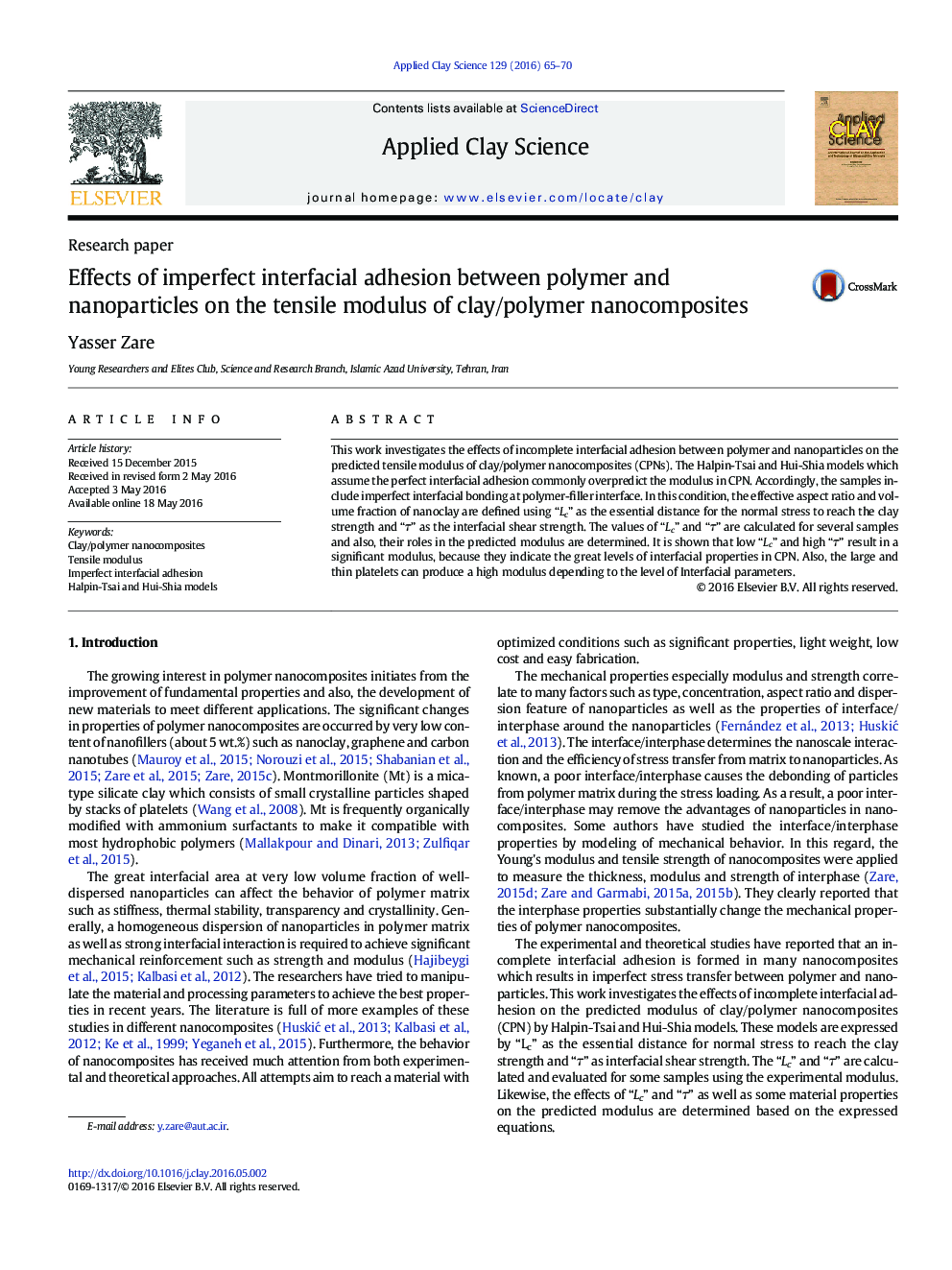| Article ID | Journal | Published Year | Pages | File Type |
|---|---|---|---|---|
| 1694024 | Applied Clay Science | 2016 | 6 Pages |
•The models for a perfect interface overpredict the tensile modulus in nanocomposites.•The effects of incomplete interfacial adhesion on the tensile modulus are studied.•The models apply the defined effective aspect ratio and volume fraction of nanoclay.•The values and roles of “Lc” and “τ” on the tensile modulus are evaluated.•Low “Lc” and high “τ” result in a significant modulus in nanocomposites.
This work investigates the effects of incomplete interfacial adhesion between polymer and nanoparticles on the predicted tensile modulus of clay/polymer nanocomposites (CPNs). The Halpin-Tsai and Hui-Shia models which assume the perfect interfacial adhesion commonly overpredict the modulus in CPN. Accordingly, the samples include imperfect interfacial bonding at polymer-filler interface. In this condition, the effective aspect ratio and volume fraction of nanoclay are defined using “Lc” as the essential distance for the normal stress to reach the clay strength and “τ” as the interfacial shear strength. The values of “Lc” and “τ” are calculated for several samples and also, their roles in the predicted modulus are determined. It is shown that low “Lc” and high “τ” result in a significant modulus, because they indicate the great levels of interfacial properties in CPN. Also, the large and thin platelets can produce a high modulus depending to the level of Interfacial parameters.
